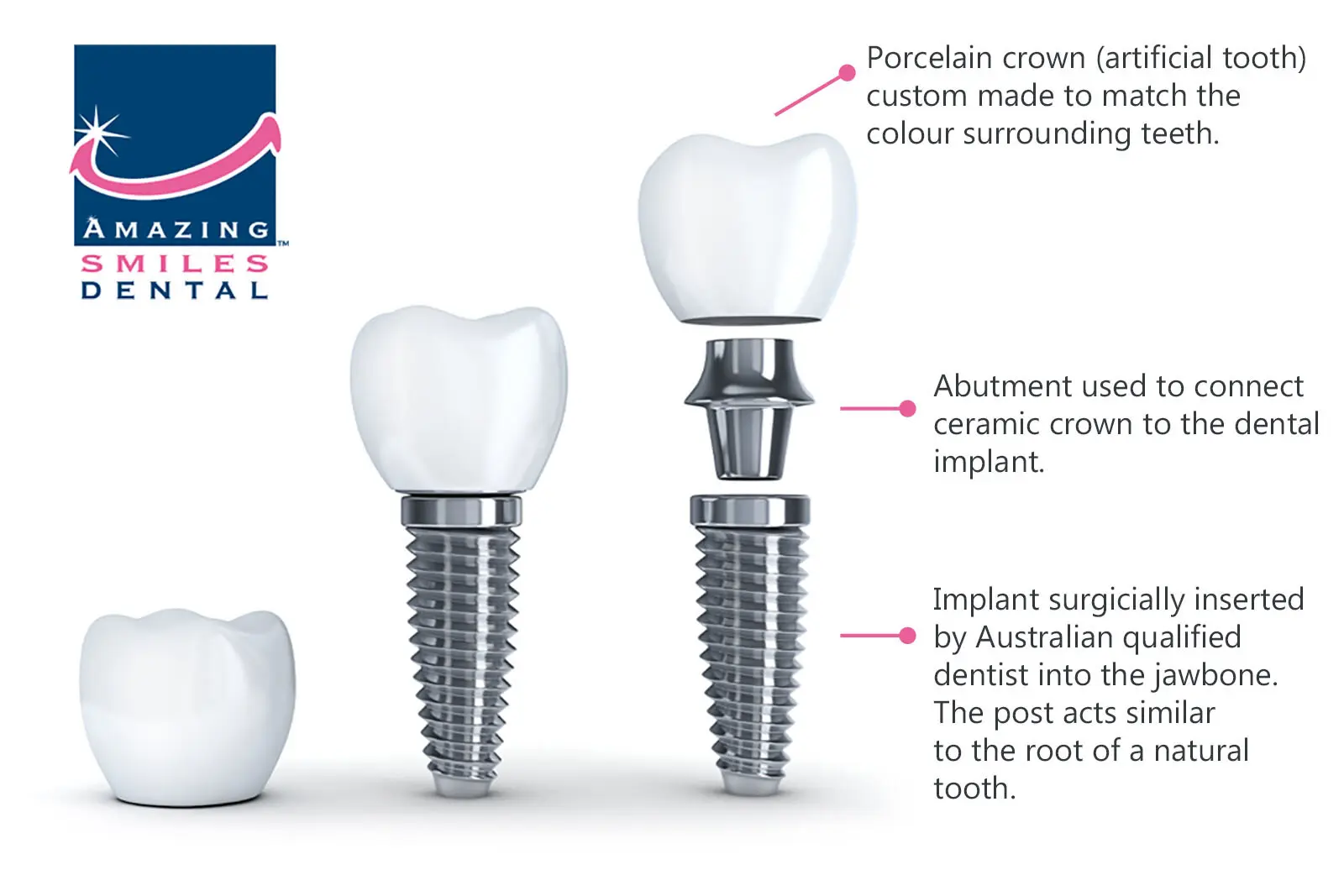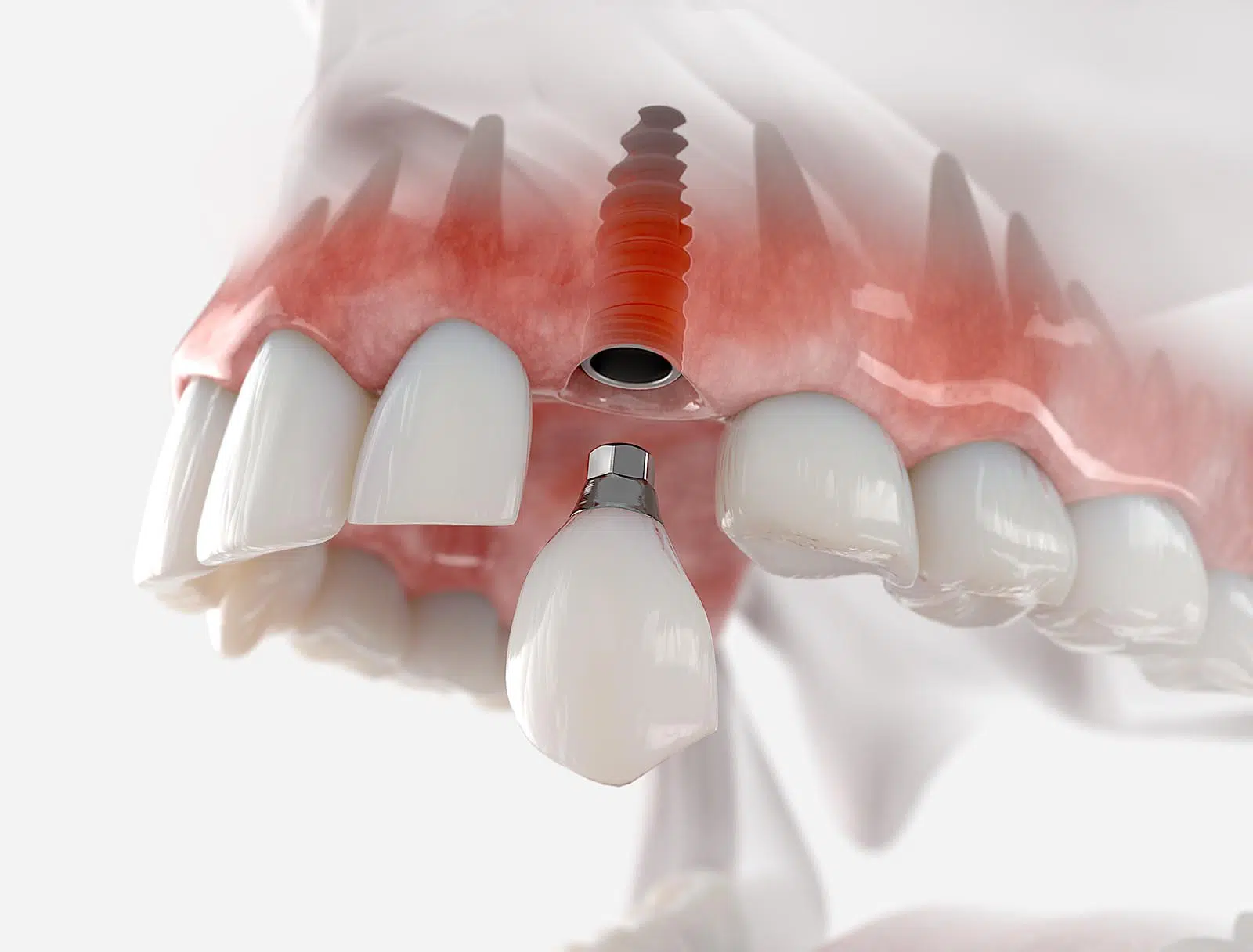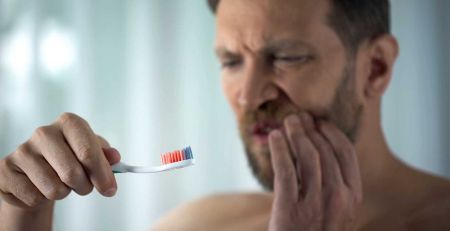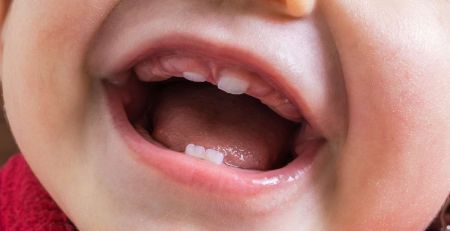In recent years, with advancements in technology, implant dentistry has become an increasingly popular method of missing teeth replacement. They are the most durable and natural-looking form of restorative dental treatment for a missing tooth.
Table of Contents
Dental implants are surgically inserted into the jawbone to solidify the implant screw. The dental implant operates the same way as the root of a regular tooth.
The visible portion of an implant is the implant crown, which is connected to the dental implant by another component known as the abutment.

With good dental hygiene and regular dental check-ups, modern implants should last a lifetime. While the titanium implant screws have proven to last decades, the ceramic porcelain crown on top of the implant may need to be replaced on average 10 to 15 years.
Even though being the most robust method for missing tooth treatment, there are factors such as; oral hygiene habits, types of foods or drinks we consume, and the traumatic impact that can affect the longevity of a tooth implant.
Just like natural teeth, dental implants are prone to accidents or damage. These may include the implant becoming loose, cracking the porcelain crown, or the implant post-breaking.
Symptoms of a loose Dental Implant
Following dental implant surgery, implants fuse naturally with your jawbone through osseointegration.
Different health characteristics affect the healing process.
Dependent on health and oral hygiene, a dental implant can become loose. Indicators of a loose implant include:
- Painful or swollen gum around the implant tooth
- Movement of the tooth
- Bleeding around the tooth
- Pain while chewing, even on soft edibles
- Implant breaking or coming out completely
If you’re experiencing any of the above conditions, you must notify your implant dentist as soon as possible to arrange an in-chair examination. Early diagnosis and preventative treatment will help avoid worsening or costly issues.
These characteristics may occur if the correct healing process (osseointegration) is incorrectly completed or jeopardised.
With correct dental hygiene, an implant breaking or coming out is rare as long-term placement allows it to fuse into the bone. However, gum issues or diseases may attribute to such occurrences.
In most cases, the abutment component attached to the implant, which houses the crown is more likely to break or become loose due to exposure to impact and trauma.
What do I do if my dental implant breaks?
If a dental implant or crown is chipped, broken, or loose, it is essential to obtain all the pieces and phone your nearest implant dentist immediately.
If the abutment becomes loose or breaks away from the implant post, there might not be a need to remove or perform any surgeries on the implant separately.
When an abutment loosens, the dentist will examine only the abutment appliance and crown. However, your nearest implant dentist will be required to diagnose the best treatment.
Unfortunately, in the rare incident of the implant screw breaking inside the gum, the implant must be surgically extracted by an experienced implant dentist and possibly replaced with a new one.
Before inserting a new implant, a bone graft procedure might help if gum health is attributed to an implant failing.
The purpose of bone grafting is to help ensure that the jaw bone structure is solid and dense enough to hold an implant. Bone grafting helps stimulate bone minerals to the weakened area of your jawbone. This process can last several months for sufficient healing time.
What to do if the crown of my dental implant breaks or is damaged?
The porcelain crown is the most exposed element of dental implant restorations. As a result, it is often the most prone to risk and damage.
Dental crowns are bonded into place with a unique dental product. Unfortunately, the seal can be broken from wear and tear over time, causing them to detach or shatter.
If a crown is loose, this is a simple reattachment process. A dental crown will require fixing when the ceramic crown cracks, breaks or fractures.
Implant crowns can break for several reasons, including:
- Biting down on hard solid foods such as nuts, ice and bones.
- Chewing foods such as caramel
- Teeth Grinding (Bruxism)
- Accidental injury or trauma
- Damage to the abutment
- No routine dental check-ups
- Deterioration of the cement used for bonding
Dentists will take a traditional or 3D intra-oral scan impression of your teeth when crowns require replacement.
The teeth impression provides a mould used as a model to design and shape the crown. A shade colour guide helps match the dental crown to the existing colour of your surrounding teeth.
How to avoid dental implant damage?
- Good oral hygiene practices; brushing twice daily, flossing and using an anti-bacterial mouthwash.
- Routine dental check-ups
- During the early phases of recovery with a dental implant, it is essential not to apply pressure to the tooth. Implants require sufficient time to fuse with your jawbone and surrounding tissues correctly.
- Avoid chewing and biting hard on solid foods such as; nuts, caramel and ice.
- Wear a nightguard if you are prone to grinding your teeth at night.
- If you’re known to grind your teeth during sleep (bruxism), it is vital to wear a night guard.
- Wearing a sports mouthguard while doing impact or combat sports.








